 MINING, ENERGY & PETROCHEMICALS MINING, ENERGY & PETROCHEMICALS |
The word Patagonia usually triggers images of penguins and whales on one side and of beautiful mountains, lakes and glaciers on the other. And that’s a pretty accurate picture if you’re looking sideways.
But while some were admiring the landscape, others were looking at what’s underneath the surface, and the experience has paid off - the region is proving incredibly rich in gold, aluminum, steel and fossil fuels. Oil and natural gas are in turn feeding two industries that are experiencing aggressive growth - electricity generation and petrochemicals.
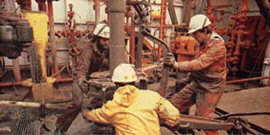
Together, they are quickly changing the profile of Argentina, traditionally a land of cattle and grains, into a major mining, energy and petrochemicals producer.
 GOLD GOLD |
Take gold. Argentina, a country with no track record of gold mining, within a few years became the world’s 14th largest producer after major investments by companies from Canada, Australia, the United States and South Africa. Together, they have pledged to pour in an extra $9 billion in the sector over the next five years.
The country produced an estimated 32 tons of gold in 1999, a massive increase from 1997’s total of only 2.3 tons. And output is expected to increase with several large operations coming on stream over the next three years.
These include Cerro Vanguardia, a gold and silver mine in the southern province of Santa Cruz, which started operations in September 1998, and the following year produced 10 tons of bullion. The mine is a joint venture of Argentina’s Pérez Companc (46.25 percent) and South Africa’s AngloGold (46.25 percent), with the remaining 7.5 percent in the hands of the province.
Several other projects further north, on the Andes foothills, have helped boost output. Major players include Australia’s MIM Holdings and North Ltd, Canada’s Rio Algom and Barrick, and the U.S. Homestake
The gold rush takes place at a time of declining global prices, but there is no paradox there, experts say -- the price drop has led producers to look for more cost-effective locations for their investments.
The make-or-break factor in terms of investment is cost. In that sense, Latin America has reemerged as an attractive spot for mining production relocation, U.N. economist Fernando Fernando Sánchez Albavera told a recent forum on gold production. And amongst Latin nations Argentina was particularly appealing due to its institutional, political and economic stability, he added.
 ALUMINUM ALUMINUM |
Yet not all that glitters is gold - and in Argentina, aluminum and steel are also shining.
Sales by Aluar, Argentina’s sole aluminum producer, are doing so well that the company plans to open up a new, $750 million plant in Patagonia to boost production and is also considering yet another, larger facility which could cost up to $1.2 billion.
The company says it will begin construction of the new plant in 2002, as soon as the government starts building a $100 million power line between southern Patagonian cities Choele Choel and Puerto Madryn, 1,800 km (1,100 miles) south of Buenos Aires.
The 370 km (230 mile) long line would ensure the new plant in Puerto Madryn -which is expected to become operational in 2004-- gets all the energy it needs to expand its primary aluminum production from the current 270,000 to 410,000 tons a year.
That should give plenty of time for international aluminum markets to recover - a key factor for Aluar, which exports 80 percent of its output. If conditions are adequate, Aluar may also build yet another plant, which would demand an extra $1.2 billion and help raise output by another 160,000 tons a year.
The firm, established in 1970, posted $410 million in sales in 1999, including $222 million in exports. With nearly 2,000 employees, Aluar has $410 million in annual sales and a net worth of $565 million. It produces primary aluminum at a world-class smelter in Puerto Madryn and laminates and extrusion billets in two other plants - one in Buenos Aires City and the other in the Buenos Aires province.
Aluar’s main customers are Japan, Korea, the European Union and the United States. Its production goes into car making, food canning and packaging, construction, sheet metal lamination, electrical wiring and aluminum foil.
 STEEL STEEL |
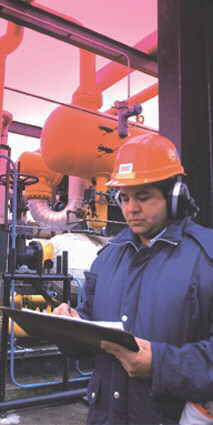
The three largest steel companies in Argentina are Acindar and the sister firms Siderar and Siderca, both belonging to the local Techint Group.
The sector is doing so well that business is booming despite a stagnant economy at home and declining international steel prices, says Ignacio de Mendiguren, president of the Argentina Industrial Union (UIA). The steel industry is in a stage of splendor and is making good sales to the United States, he says.
Acindar, the largest producer of non-flat steel products in Argentina, is seeking new, sophisticated markets ready to pay a premium for its high quality products in order to keep the momentum despite the current market difficulties.
Brazil’s Companhia Belgo Mineira (an affiliate of Luxembourg’s Arbed), has agreed to a $100 million capital injection into Acindar in exchange to an initial 20 percent stake in the firm.
Acindar, founded 60 years ago, sells about 25 percent of its steel ware output to more than 20 countries in the Americas, Europe, Asia and Oceania. Last year it sold 3,000 tons of products to the United States and it aims to increase exports there to some 60,000 tons in about two years. It also has fully-owned subsidiaries in Uruguay and Chile.
Yet, the domestic market remains the main target for its products, which include rolled steel, welded tubes and pipes, wire, nails, and other steel ware used in construction, the oil and gas industry and the agricultural and manufacturing sectors. Acindar has 3,000 employees and produces 1.35 million tons of steel products a year.
Same parents, different destiny
Siderca and Siderar are two sister steelmakers, but couldn’t have had more different fates - while Siderca’s business (pipes for the oil and natural gas industry) is booming, Siderar, which makes laminates for construction, is suffering from the slowdown of the building sector.
Helped by high international crude prices, Siderca saw its sales rise by 30 percent -from 604,000 tons to 780,000 tons—and its exports increase by 35 percent --from 429,000 to 574,000 tons-- in the fiscal year ending in March 2001.
With $485 million in annual sales, Siderca is also a key component of the new global brand, Tenaris, launched last April by the DST alliance, the world's leading seamless tubes manufacturer. Born as a strategic alliance among Argentina’s Siderca, Italy’s Dalmine and Mexico’s Tamsa, Tenaris produces steel pipes in seven countries, has 13,000 employees, and total annual revenues of $2 billion.
Siderar is a different story altogether. It has eight industrial plants in Argentina that produce 2 million tons of steel ware and has sales in excess of $1.1 billion, including shipments to 40 nations. But sagging domestic demand, combined with the lowest international prices in the last 20 years, have produced three years of negative growth.
To make matters even worse, the United States could slam its doors to Argentine steel after Washington decided in June to clamp severe import restrictions in order to protect its own steelmaking industry --which is also severely affected by low prices and falling demand—from foreign competition.
 OIL OIL |
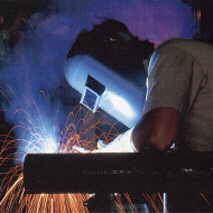
But most of those industries depend on ample availability of inexpensive fuel, and not only Patagonia but several other parts of Argentina as well provide just that - plenty of oil and natural gas reserves.
Buoyed by high international crude prices, Argentina’s oil industry last year posted net profits of $1.5 billion - a staggering 90 percent increase over 1999.
Since its was privatized a decade ago, the fossil fuel sector has attracted more than $25 billion in investments and turned Argentina from net importer into a significant player in the regional energy market, selling mostly to Mercosur partners Brazil, Chile and Uruguay.
Crude oil production currently runs at some 125,000 cubic meters a day and between 80 to 90 wells are being dug every month, which means that by year’s end the total number will grow from 14,000 to a little over 15,000.
Oil, gas and electricity exports more than doubled in two years and in 2000 brought in a net $4.1 billion, or 18 percent of total Argentine exports.
Argentina could become the major energy supplier of the Southern Cone region, and due to the relative maturity of its own energy markets, Argentine energy companies will look increasingly to the country's neighbors for future opportunities, says the U.S. Energy Information Administration (EIA) on its report on Argentina.
This is already under way, says former Secretary of Energy and Mining Debora Giorgi.
We have seven pipelines with Chile, including one oil pipeline, one power line and several gas lines. We have two pipelines underway with Brazil and one underway with Uruguay. We are now exporting 1,000 megawatts of electricity to Brazil, she touts.
Repsol-YPF, the big guy on the block
Repsol-YPF alone last year posted a net gain of 2.4 billion euros, an impressive 140 percent increase over 1999’s profits.
The year 2000 results have been exceptional, mostly as a consequence of the strategic success that represented the acquisition of YPF the previous year, Repsol-YPF Executive President Alfonso Cortina said in a letter to shareholders in which he called YPF a positive and permanent influence from day one.”
Spain’s Repsol bought YPF in 1999 for $15 billion and changed its name to Repsol-YPF. It accounts for about half the country's total refining capacity, mainly from its ownership in the La Plata and Lujan de Cuyo refineries in the Greater Buenos Aires region, among the largest in the country. It recently swapped $1 billion worth of assets with Brazil’s Petrobras, further cementing regional energy integration.
The remaining refining capacity is split among Shell's one refinery (17 percent), Esso's two refineries (16 percent), and the five refineries of four smaller companies (17 percent).
Cortina said recently that due to the outstanding results and renewed confidence in Argentina’s recovery, the company will add an extra $1.2 billion to its investment plans in the country during 2001.
Repsol-YPF was already planning to invest $24 billion in Argentina over the next five years - an average $4.8 billion a year. The decision on the extra funds was made after the company won an extension of the Loma de la Lata contract. Loma de la Lata, in the southwestern province of Neuquen, is the country’s largest natural gas and oil field.
A number of oil and gas pipelines are helping Argentina sell its fossil fuels to its neighbors, while high tension lines are doing the same with electricity.
| A crowded niche
Other major players are Anglo-Dutch Shell, Argentina’s Pecom, America’s ESSO and Chevron and Germany’s Wintershall.
Shell has had a presence in Argentina since 1914 and in 1997 it branched out to other areas, acquiring forestry and natural gas distribution companies. It currently is one of the three companies controlling the downstream oil sector in Argentina, alongside Repsol-YPF and Esso.
Pecom Energia is a unit of Argentina’s holding company Perez Companc, which of late has been investing heavily in order to improve its competitive position vis-à-vis Repsol-YPF. In 1999 Perez Companc had $1.3 billion in revenues. It recently acquired a refinery in Santa Fe province and has also expanded its activities in Brazil, Bolivia, Ecuador, Peru and Venezuela.
With so many players around, Pecom sees its forte on its knowledge of the region, an asset that it says can help it select just the best of the crop and keep costs down.
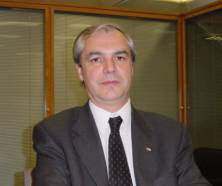
There are a lot of international players that are coming to the region to make big commercial deals, but it is difficult to get good results from those projects. We are small but we can be more selective, says Perez Companc’s CEO Mario Lagrosa.
"We want to have the best portfolio of the whole Latin American region. That is the way in which we can differentiate from other companies that compete only in scale."
With a daily output of 78,000 barrels of oil and 40 million cubic feet per day of natural gas, Chevron is one of the country’s top crude oil producers. The company in 1999 coughed up $800 million to purchase Petrolera San Jorge, a major Patagonian field.
ESSO Argentina, the local affiliate of Exxon Mobil Corp., recently announced it would invest $100 million next year to increase the production capacity of its refinery in Campana, northwest of Buenos Aires, and build new service stations.
And Germany’s Wintershall, which produces some 12,000 bpd, plans to invest $650 million over the next 10 years to develop its fields in Patagonia. The company drilled four production wells last year and plans to drill at least two exploration and three development wells by December.
 GAS GAS |
But the trump card of Wintershall --wholly owned by the BASF group--, is natural gas, which now packs more punch than oil.
Certainly, in 2000 average gas production was 125 million cubic meters per day, whereas oil output was 122,500 cubic meters. Since energetically 1,000 cubic meters of gas are considered equivalent to one meter of crude, there was more gas than oil.
Argentina’s proven natural gas reserves are the second largest in Latin America, right behind Venezuela’s, and industry experts say the probable reserves are likely to be much higher.
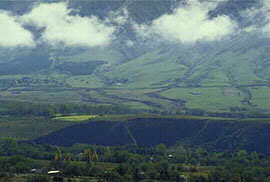
Growing demand comes from electricity generation, Argentina’s burgeoning petrochemical industry, the increasing number of vehicles being converted to liquefied gas, home, commerce and industry consumption and also from rising sales Brazil, Chile and Uruguay.
Thanks to the increasing availability of natural gas, new thermoelectric plants are being built, turning Argentine electricity into one of the cheapest in the world.
In the northern province of Salta, Tecpetrol S.A., a unit of Techint, managed to boost gas production at its Chango Norte-La Porcelana field by nearly 400 percent between 1996-1999. The field helped substitute imports from Bolivia and generate an energy surplus that resulted in new exports to Chile.
And Camuzzi Argentina, a subsidiary of Italy’s Camuzzi Gazometri, said it would invest $200 million over the next three years to expand its natural gas and electricity services in central and southern Argentina.
At the same time, a $535 million pipeline to take Argentine natural gas to Uruguay first and Brazil later is now under construction. The Gasoducto Cruz del Sur duct will deliver six million cubic meters of gas a day to Uruguay for residential and industrial use after completion of the initial tranche next January. Wintershall has a 10 percent stake in the $535 million project.
 PETROCHEMICALS PETROCHEMICALS |
Then there’s the burgeoning petrochemical industry, also a major natural gas consumer.
The country’s largest natural gas field is Repsol-YPF’s Loma de la Lata. The company uses part of the gas for local consumption, part to feed a gigantic petrochemical complex in Bahia Blanca - a deepwater port 800 km (500 miles) southwest of Buenos Aires, and still comes up with a surplus that it sells to Brazil.
Project Mega, a $715 million petrochemical joint venture between Repsol-YPF, Petrobras and Dow Chemical, cracks millions of cubic meters of gas a day into different components, including ethylene, which Dow turns into polyethylene -one of the commonest forms of plastic. The other components it exports to Brazil. Petroquímica Bahía Blanca (PBB), owned by Dow (63%), Repsol-YPF (27%) and Japan’s Itochu Corp (10%), buys ethane from Mega and transforms it into ethylene. It is now trebling its ethylene output to 700,000 tonnes from the current 250,000. PBB in turn sells the ethylene to Polisur (70% Dow, 30% Repsol), which is taking its annual polyethylene output from 260,000 to 610,000 tonnes. Most of the extra production will be earmarked for export to other Latin American countries, including Argentina’s partners in the Mercosur trade bloc.
With a stagnant economy at home, Dow is relying more and more on those shipments.
In the last three years, the local consumption decreased, says Dow Quimica Argentina’s President OscarVignart. We are exporting more plastic products than what we had planned before.”
Profertil, a new, $700 million fertilizer plant owned 50-50 by Repsol-YPF and Canada’s Agrium, also feeds on gas. The nitrogen plant, one of the largest of its kind in the world, is turning the country from fertilizer importer into net exporter. The company, with an annual output of one million tons, reckons it will help improve Argentina’s trade balance in some $200 million a year.
Bahia Blanca is also home to Solvay Indupa, the country’s largest plant of polyvinyl chloride (PVC, another common kind of plastic). It recently beefed up production from 80,000 to 220,000 tons a year.
 ELECTRICITY ELECTRICITY |
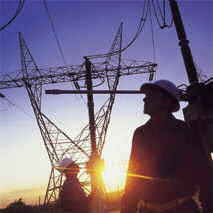
Much of the natural gas is being turned into electricity. Argentina’s electricity sector has boomed since privatization a decade ago and prices have crashed to one of the lowest world levels to the benefit of millions of consumers.
Domestic demand is growing at a robust pace and new thermoelectric plants have been popping up like mushrooms after the rain, even before a severe energy crunch in Brazil opened up new market opportunities.
Deep and wise deregulation led to tough competition which, combined with the completion of several public-sector projects and abundant and cheap natural gas to feed new thermoelectric facilities (Argentina has one of the highest gas reserves per capita in the world) knocked prices down.
Contracts signed in 1992 under which huge thermoelectric generators Central Puerto and Central Costanera were selling energy to the two main distribution firms, Edenor and Edesur at relatively high prices, expired last year. Now most of the electricity trades in the spot market at about one fourth of their pre-privatization levels.
Energy consumption has been growing at a 5-6 percent annual rate and despite a 30-month-long recession, is expected to keep rising in the foreseeable future. Supply comes not only from thermoelectric generators but also from nuclear and hydroelectric plants --including the gigantic Yacyreta dam, a binational venture on the border with Paraguay—and from wind turbines.
Taming Patagonia’s roaring winds
Two major Spanish companies are joining forces to tame Patagonia’s roaring winds and turn them into electricity. Endesa and Elecnor plan to invest a total $2.4 billion to set up wind turbines in four provinces and produce 3,000 megawatts - 12 percent of the country’s projected electricity consumption -- within a decade.
To pursue their enterprise, they have set up a new company, Energias Argentinas (Enarsa), which will build the turbines in the southern provinces of Neuquen, Chubut, Rio Negro and Santa Cruz.
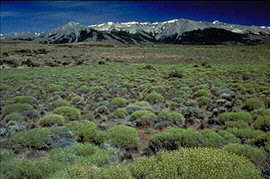
Chubut has come up as one of the best places in the world for (eolic energy) production, says the province’s governor Jose Luis Lizurume. This is because of the regularity, frequency and intensity of its winds.”
Each of the initial facilities will generate about 10 megawatts and consist of ten to fifteen 45-meter tall, 40-meter wide mills.
At a later stage, Enarsa will start setting up larger, 200-megawatt wind facilities. Unlike the smaller batches, which will deliver their energy to local cooperatives, the bigger ones will be connected to the national grid and help Argentina meet its electricity export target of between 4,000 and 5,000 megawatts a year by 2010.
Argentina is already selling electricity to Chile and several plans are under way to set up high tension lines to Brazil, which is undergoing a severe energy crunch due to a crippling drought that has taken a toll on many of its hydroelectric plants.
The energy sector keeps attracting more and more players all the time. France’s TotalFinaElf, for example, recently spent $650 million to purchase controlling stakes in four major thermoelectric plants in Argentina - Central Puerto, InterAndes, TermoAndes and Piedra del Aguila.
The operation, currently in due diligence stage, means that TotalFinaElf, already Argentina’s second natural gas producer, also turns into the top electricity generator, with an installed capacity of 4,000 megawatts or nearly 20 percent of the country’s total installed capacity.
The company has invested so far a total $2.2 billion in Argentina, It sells natural gas to Chile and Brazil and liquid gas to Chile.
 GAS-TO-LIQUIDS GAS-TO-LIQUIDS |
Patagonia’s abundant, cheap gas is also attracting other businesses. Shell, for example, is considering investing $1.5 billion to build a rare plant to convert natural gas into cleaner-than-normal kerosene, diesel oil and other liquid fuels in Tierra del Fuego, on the southern tip of the continent.
The plant would generate 5,000 jobs during the three years of construction and an extra 500 permanent positions. For that reason, the province has offered Shell an exemption from all local taxes in order to help it build the gas-to-liquids plant in Rio Grande, 120 km (75 miles) from Ushuaia, the provincial capital.
The project would consume 18 billion cubic meters a day of gas, or nearly 20 percent of the total Argentine natural gas consumption. Shell plans to sell diesel oil in the domestic market and export the other fuels to Brazil and Japan.
Liquid fuels produced from gas are becoming increasingly popular as they lack sulfur and so pollute less than the regular products. Shell currently runs the world’s only commercial gas-to-liquids plant, in Malaysia. It is expected to make a final decision on the Patagonian plant before year’s end.
|

